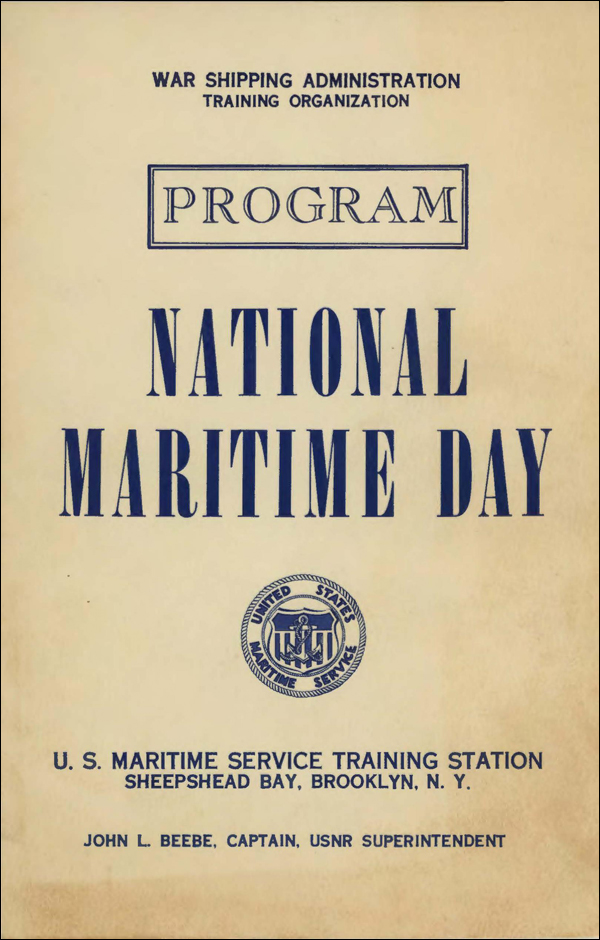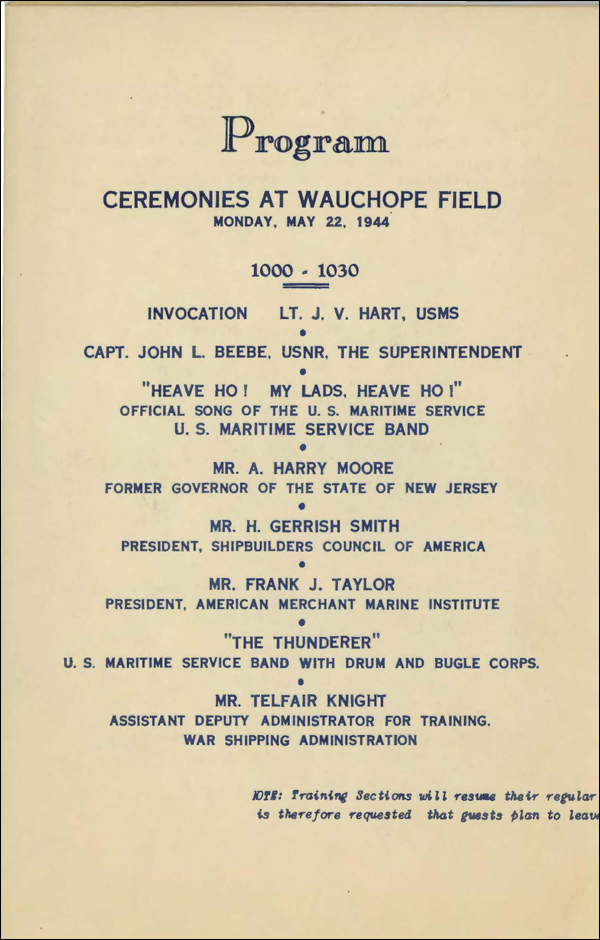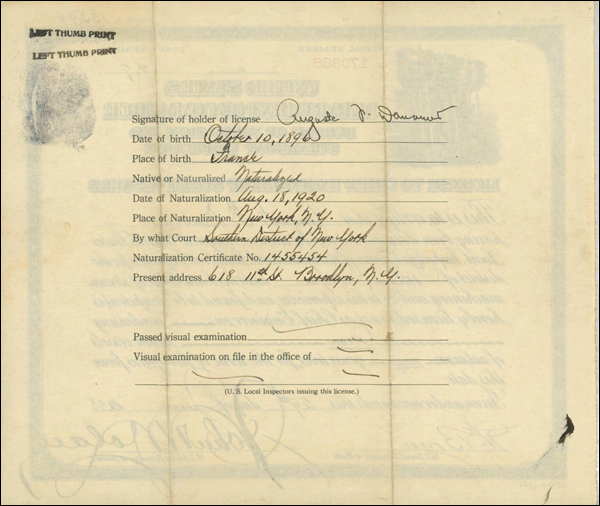August is on the right.
August Douvener was born in Forbach, France in 1896. He emigrated to New York at age 13 with his
mother Thérèse Christ. He was enrolled in the Union Chrétiene de Jeunes Gens de Langue
Française de New York, the French Branch of the Y.M.C.A., where he received an excellent
report (November 1911). “In the past year we were able to study him closely in all lines
and may state that August is a bright, intelligent boy of good moral character, energetic,
clever and very handy. We take pleasure in recommending him to those who may need his services,
sure he will be a faithful employee.” A handwritten note says, “August speaks English and
German fluently and understands French!”
August quickly set his sights on higher education which would prepare him to sail the seas.
He worked as an apprentice for a De La Vergne Machine Co. in New York, a company specialized
in making oil, steam and gas engines for boats and railroads while he studied mechanical
engineering at the International Correspondence School in Brooklyn. His subjects included
Steam Turbines, Steam Engine Design, Pneumatics, Boiler Settings and Chimneys, Heat, and
Entrophy and Steam. He completed his course work in May 1915 at nineteen years old and
then set sail for one year on the S.S. Chipana.
On March 22, 1920, he joined the crew as an engineer on the steamship SS Santa Cecilia
from Baltimore, Maryland. He went on two voyages the first (March 22- Oct. 13. 1920) as a
Third Assistant Engineer and the second as Second Assistant Engineer (Oct. 13, 1920 –
Feb. 2, 1921). He received an excellent review: “He is a thoroughly competent engineer,
at all times reliable and strictly sober in his habits and now leaves this vessel of his
own accord, being transferred to another of the Company’s steamers. Oct. 18, 1921,
August Francois Douvener became a naturalized citizen.
The sea continued to call young August. From 1921 until 1925, he served as 1st, 2nd. 3rd
Assistant Engineers aboard the SS Ponce, a passenger New York Porto Rico Line and other
steamships that plied the Caribbean. Finally, he landed the position as Chief Engineer
for a Cuban line in 1924 at 28 years old.
Marriage on November 18, 1923 and an interest in spending more time with his wife may
have prompted August to accept a position as Supervisor in the Fletcher Ship Yard in
Hoboken. He worked there for five years from 1925-1930. His daughter Dorothy was born
April 20, 1927.
In July 1930, August set sail again, this time from New York to Liverpool. In 1933, he
worked for the Isthmian Steamship Company, a shipping company founded by US Steel in 1910.
August Douvener sailed aboard these cargo ships to far off ports of call such as
Singapore, Hawaii, Cape Town, and Japan.
Isthmian cargo ships eventually were used in World War II by the Merchant Marines to
transport troops and cargo around the world. At 42 years of age, August was certified
by the United States Department of Commerce, Bureau of Navigation and Steamboat
Inspection to be licensed as a chief engineer for steam vessels. August 10, 1940 he
was appointed to the Naval Reserve and assigned to the Merchant Marines for engineering
duties and given the rank of Lieutenant.
August sent a letter to his daughter Dorothy dated Oct. 8, 1942 that she never received
but was later recovered, saying “It will not be very long before we will return. This
is all I can tell you at the moment. Love to all and hoping to see you soon. Dad”
The following day, Oct. 9, the SS Steel Navigator left Liverpool headed to the US in a
convoy of 36 ships in the war effort. Halfway between across the Atlantic Ocean, the
ship was torpedoed, the boilers exploded and August Francois Douvener perished Oct. 19, 1942.
Nov. 16, 1942, his wife Catherine Douvener received a telegram stating: “The Navy
Department Deeply regrets to inform you that your husband August Frank Douvener was
killed at sea following action in the performance of his duty and in the service of
his country. The Coast Guard extends to you its sincerest sympathy in your great
loss. …………” In shock, probably denial, my grandmother ripped up the telegram. My mother
pieced it together and taped it. It still exists today nearly 80 years later.
The original telegram.
The telegram's message.
In a ceremony on May 22, 1944 at Sheepshead Bay, Brooklyn, New York, Catherine Douvener
received the Mariner’s Medal for husband who made the ultimate sacrifice for the nation.
-- Susan M. Varlamoff (2021)
|





























